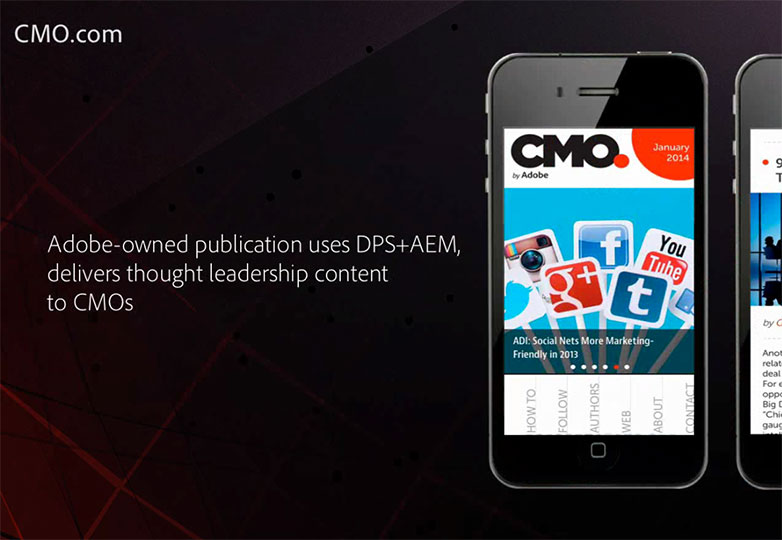Adobe's new product integration streamlines content across devices
One of the big challanges for large companies, especially in the digital age, is establishing and maintaining brand consistency. A corporation like Sony for example, wages a daily war to ensure consistent communications across five continents.
Although we often think of publishers to be exclusively involved in news and magazine industries, all corporations typically publish thousands of documents per year; they include websites, microsites, reports (statistical and financial); there are point of sale promotions, internal communications, instruction manuals and legal documents. Increasingly, for reasons both economic and environmental, the emphasis is being placed upon digital delivery and especially mobile delivery.
Today Adobe announced that they're integrating their Digital Publishing Suite with Adobe Experience Manager, in an effort to capture a larger market share of this growing sector.
DPS and Adobe Experience Manager make it significantly easier for publishers and brands to produce consistent, rich content for customers on mobile and the Web. — Nick Bogaty, head of digital publishing, Adobe

Adobe believe that the integration of the two platforms as part of the Adobe Marketing Cloud, together with the combination of Adobe Analytics will streamline delivery, speeding up production and reducing costs for thousands of digital content publishers worldwide.
Centralizing assets is not a new idea. From the dawn of the Internet, corporations maintained extranets as repositories for multi-Mb PSDs featuring board-authorized stock photography and artwork. Designers would simply access the resources, regionalize it, and publish. Even now, companies use services like Dropbox to host assets available by invitation only. Many large companies, Twitter for example, even host public repositories of key assets such as their logo together with usage instructions, in an attempt to maintain brand integrity.
The difference with Adobe's approach, is that they are serving the assets directly. Templates are designed allowing content authors to drag and drop assets—from text right up to video—into new editions of publications, from where they can be pushed out in a fraction of the time of the traditional process. Digital Publishing Suite is already being used by the likes of Condé Nast to speed up production, reduce costs and ensure consistency.
Adobe DPS is the go-to solution for publishing our magazine apps on mobile devices. The integration of Adobe Experience Manager not only enables us deliver a consistent Vanity Fair experience on multiple platforms, we have advanced our on-sale date by five days. — Emily Smith, director of operations for corporate editorial, Condé Nast
Initially this may appear to be another attack on the design industry from a large company intent on WYSIWYGing a design process. In reality, it empowers designers by limiting the role of artworker, providing a system that needs to be designed, and reducing the repetitive board-room approval process that plagues in-house teams.
It also strikes a blow for those arguing that a responsive solution isn't always the best option by enabling native apps, distinct from a core website, to achieve similar levels of consistency.
It's unlikely that Adobe's latest move will affect the working lives of most freelancers or small teams, but in-house designers and consultancies that work with global brands can anticipate it playing a big role in the next couple of years.
Are you planning to use Adobe's DPS in conjunction with AMC? How do you maintain consistency across platforms? Let us know in the comments.

















